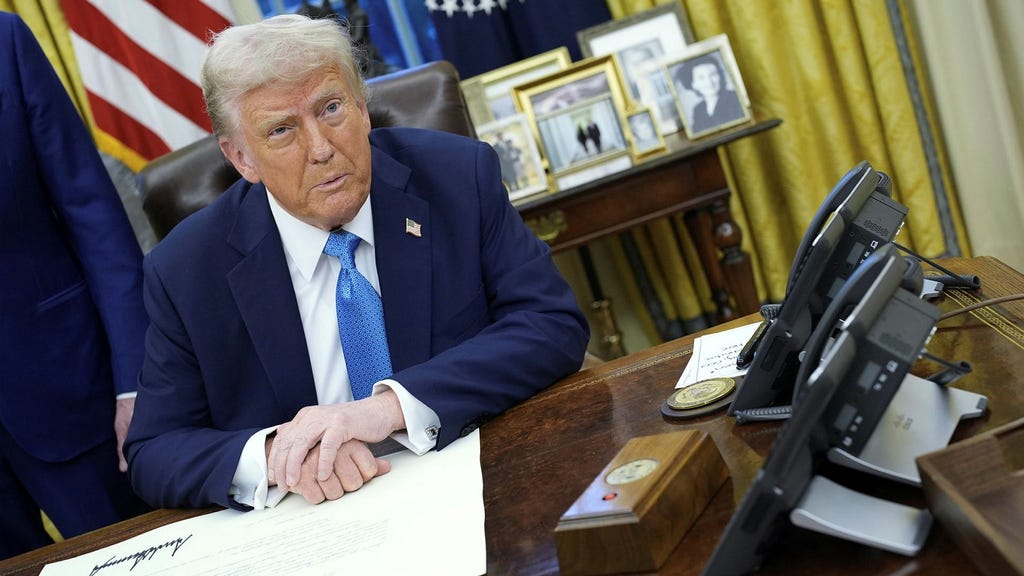The recent imposition of a 25% tariff on steel and aluminum imports from Canada by the United States, under the justification of national security concerns, has ignited a firestorm of controversy and retaliatory measures. This decision, spearheaded by President Donald Trump, has been met with widespread condemnation in Canada, a nation whose economic ties with the US are deeply intertwined. While some perceive this move as a negotiating tactic, a bluff designed to extract concessions, others see it as a serious threat to the long-standing trade relationship between the two countries. The central question remains: will Canada be the one to call Trump’s bluff, assuming it is one, and what are the potential ramifications of this trade dispute?
Canada’s vulnerability stems from its significantly greater dependence on the US market compared to the reverse. A substantial portion of Canadian exports, particularly in crucial sectors like automotive and energy, are destined for the US. This dependence creates an inherent asymmetry in the trade relationship, giving the US considerable leverage. Retaliatory tariffs imposed by Canada, while impactful, are unlikely to inflict the same level of economic pain on the US. This imbalance complicates Canada’s response. While the Canadian government has pledged to respond in kind with tariffs on a range of US goods, it must tread carefully to avoid escalating the situation and further harming its own economy.
The rationale behind Trump’s tariffs, invoking national security concerns, has been widely questioned, particularly by close allies like Canada. Critics argue that framing Canada, a steadfast partner in defense and security initiatives, as a national security threat is not only illogical but also undermines the very foundation of the long-standing bilateral relationship. This argument gains further traction considering the tightly integrated North American supply chains, particularly in the automotive sector. Disrupting these established networks through tariffs is likely to harm businesses on both sides of the border, raising costs and potentially leading to job losses. The dubious justification for the tariffs fuels speculation that they are indeed part of a larger negotiating strategy, aimed at extracting concessions in other areas, particularly the renegotiation of the North American Free Trade Agreement (NAFTA).
Canada’s response to the tariffs has been a combination of firmness and caution. While unequivocally condemning the tariffs and vowing retaliatory measures, the Canadian government has also emphasized the importance of maintaining open communication and seeking a diplomatic resolution. This approach reflects the delicate balancing act Canada faces. On the one hand, it must demonstrate resolve and defend its interests against what it perceives as unfair and damaging trade practices. On the other hand, it must avoid escalating the conflict and jeopardizing the broader economic relationship with the US, which remains vital to Canadian prosperity.
The potential consequences of a protracted trade war between the US and Canada are significant for both countries. Disrupted supply chains, increased prices for consumers, and job losses are among the most immediate concerns. Beyond the economic impacts, the political fallout could also be substantial, potentially straining the close diplomatic and security ties between the two nations. The situation underscores the interconnectedness of the North American economies and the risks associated with protectionist trade policies. Finding a path towards de-escalation and a mutually beneficial resolution is crucial to mitigating these risks and preserving the long-term stability of the relationship.
The current trade dispute serves as a stark reminder of the complexities and challenges inherent in international trade, particularly in an era of rising protectionist sentiments. While the US and Canada have historically enjoyed a close and mutually beneficial trade relationship, the imposition of tariffs and subsequent retaliatory measures have cast a shadow over this partnership. Whether this dispute is a temporary blip or a harbinger of a more significant shift in US trade policy remains to be seen. However, the outcome will undoubtedly have significant implications not only for the US and Canada but also for the broader global trading system. The challenge for both countries is to navigate this turbulent period while safeguarding their respective economic interests and preserving the essential elements of their long-standing relationship.














